Today, being the 27th Nov ’21 is the hottest day by far of what has been a very mild spring. A warm’ish 37OC and we’ve been watching how the bees react to the warmer weather.
Water, shelter, and food are commonly recognised as the essentials of life, notwithstanding the air we breathe. And, our bees are no exception. My next post will discuss my increasing concern about the hive overheating, but for this post let’s explore the topic of water – the blood of life.
When planning for our beehive we noted that most of our neighbours had swimming pools, and from what I’d read, salty or chlorinated swimming pool water attracted bees like moths to a light. So, whilst I can’t control where my bees choose to sake their thirst, I can offer them a homebaked local alternative to hopefully minimise the instances of my bees becoming a nuisance to the neighbours.
Coincidentally, we already had a small kid’s wading pool full of water to sustain some tadpoles of our local Motorbike Frogs that had found and used it to lay eggs in after the pool had been left out for our dog. Jules had been patiently tending our tadpoles into froglets when of course the inevitable happened and we found more frogs eggs – and thus the cycle of life repeats. So, with a desire to provide a home water source for the bees and to address the now very manky, wading pool tadpole nursery, we undertook some backyard renovations.
We had read that bees prefer minerally, dirtier water over clean freshwater due to the extra nutrients and minerals they get from it. We’d also read that they need plenty of landing space as bees aren’t swimmers and drown easily. Finally, the last piece of critical info we’d read was that the ideal water source for the hive should be a minimum 5 to 20mtrs away.
Knowing where our beehive was going to be located, we didn’t have a location in that sweet spot to locate the water. So, we opted instead to place the new pond about 3mtrs away, hoping that they’d find and realise our water was closer and more preferable than our neighbours pool water.
Digging out a couple of random plants in our back garden bed, we cleared some space under our recently skeleton pruned Orange Tree and installed a 250ltr pond liner we’d bought from the pond place. I also installed a water line to a tap near the house so that we could easily top the water up when needed. And, I installed an external power point above the pool to power a small pond pump.
To make things look and sound a bit nicer, and more importantly create a couple of different surfaces for our bees, and the local birds, to drink from, we installed a two-level water cascade using a couple of terracotta pot trays as dishes. We then purchased and added some water plants around the rim, as these would filter and keep the water relatively algae-free. And, we bought and introduced five Western Pygmy Perch, which are W.A. native freshwater fish who don’t eat tadpoles but will feed on mosquito larvae – a natural win-win. Once the pond had settled in we relocated our tadpoles to their new home – Jules swears she saw the taddies smiling – and then sat back to see if the bees would use it.
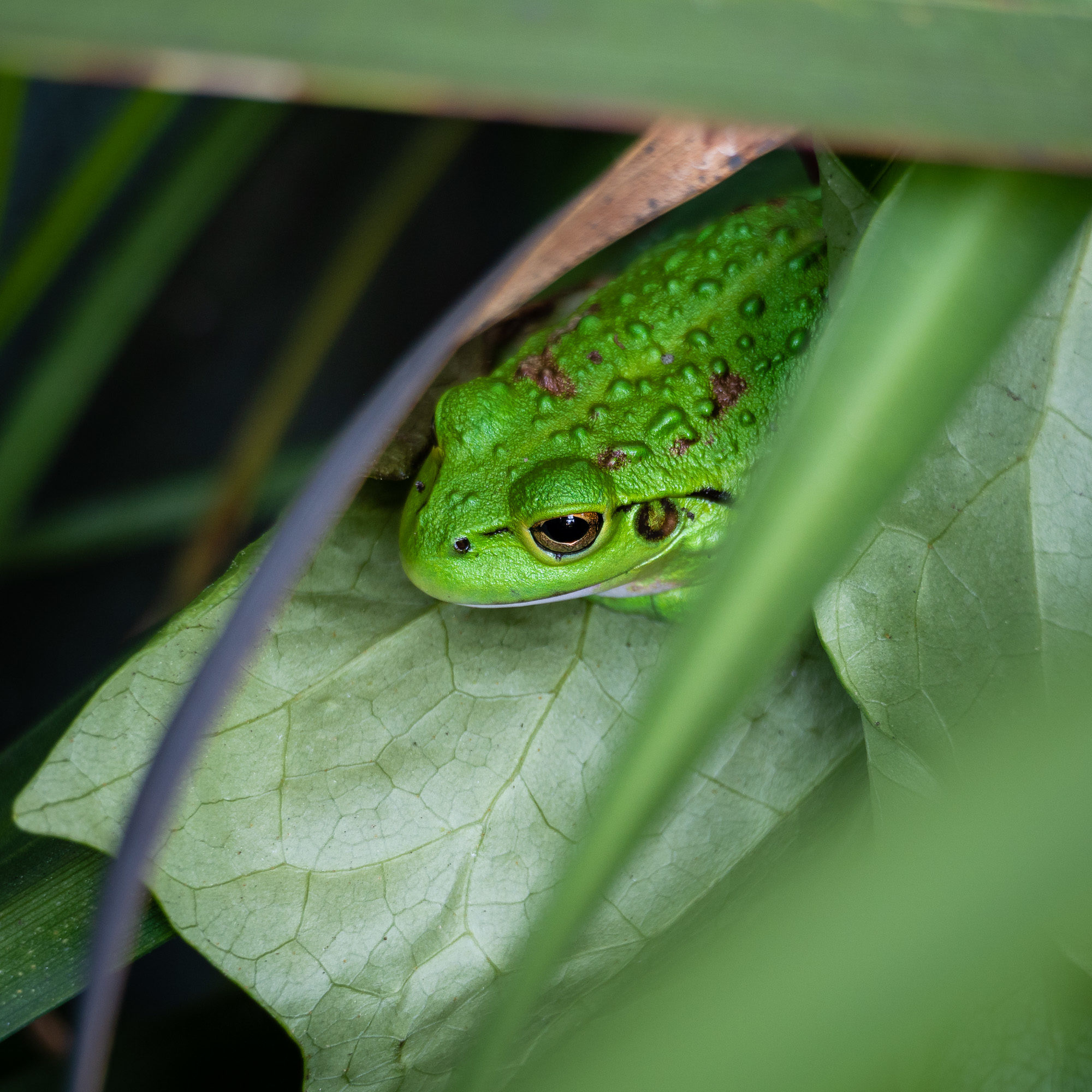
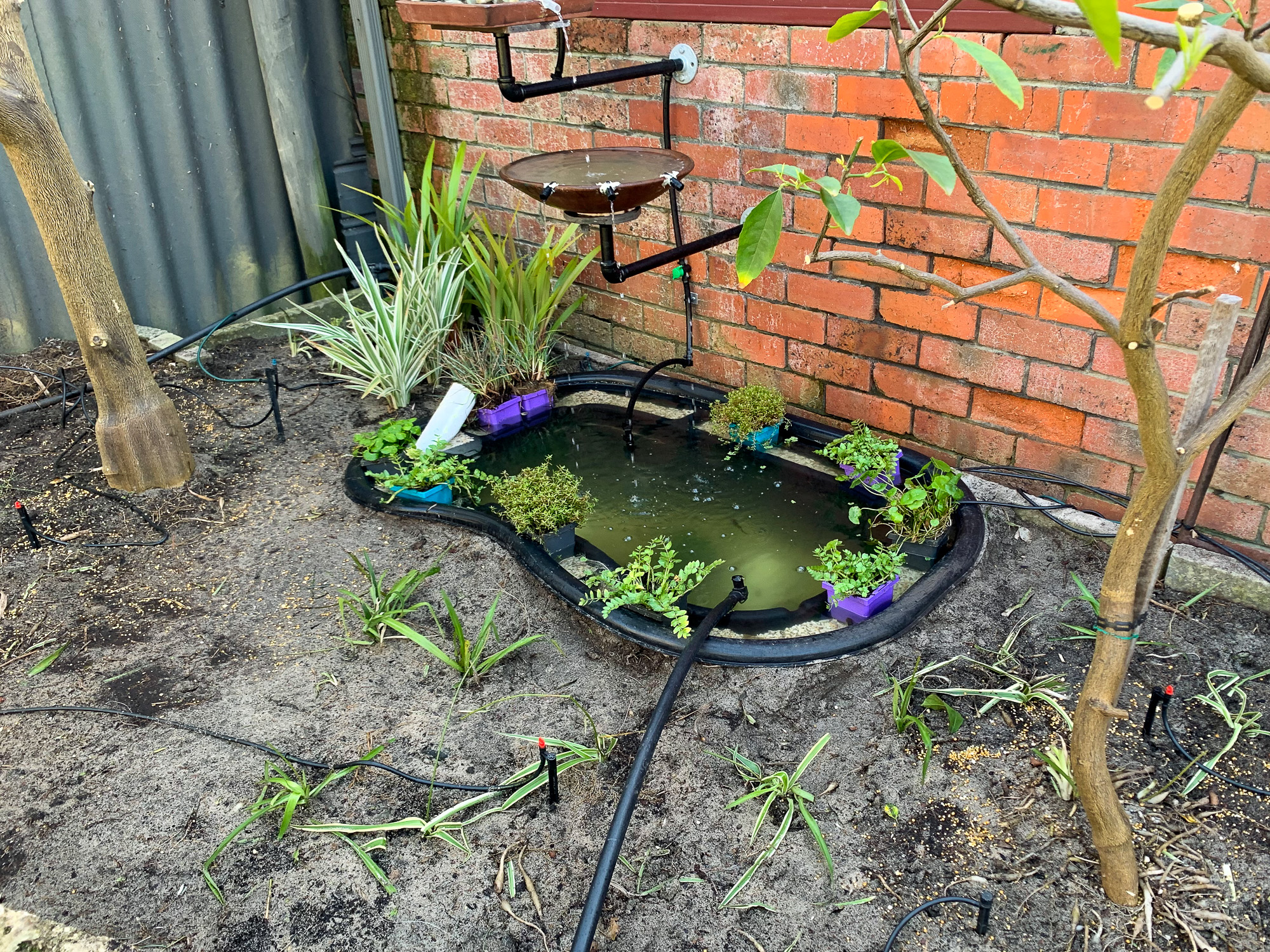
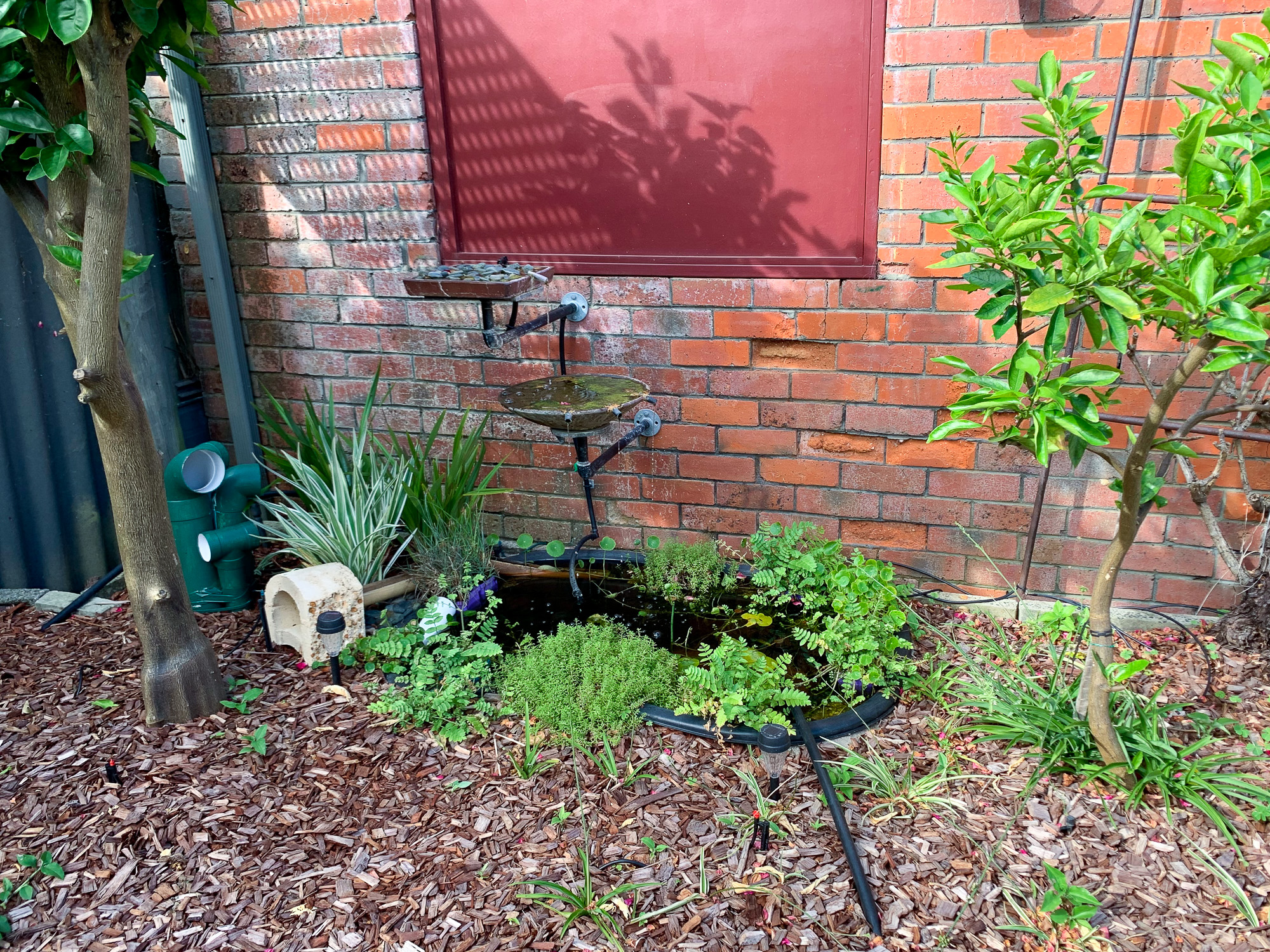
Relatively quickly we saw the odd bee using the water plants in the pond as landing platforms for a drink. This was a relief, however, we weren’t seeing the numbers of bees we expected, although the weather was still relatively cool at this point.
Well, the temperature has steadily risen this week, maxing out in the high 30’s (C) today and….. SUCCESS! We’re seeing lots of bees, wasps and other insects use our pond and the drinking trays for water. Given the number of bees in the hive versus the amount we’re seeing drinking, I’m sure we have lots of our bees still using our neighbour’s pools. However, no one can accuse us of not trying to do the right thing by not providing our bees with a local water source.
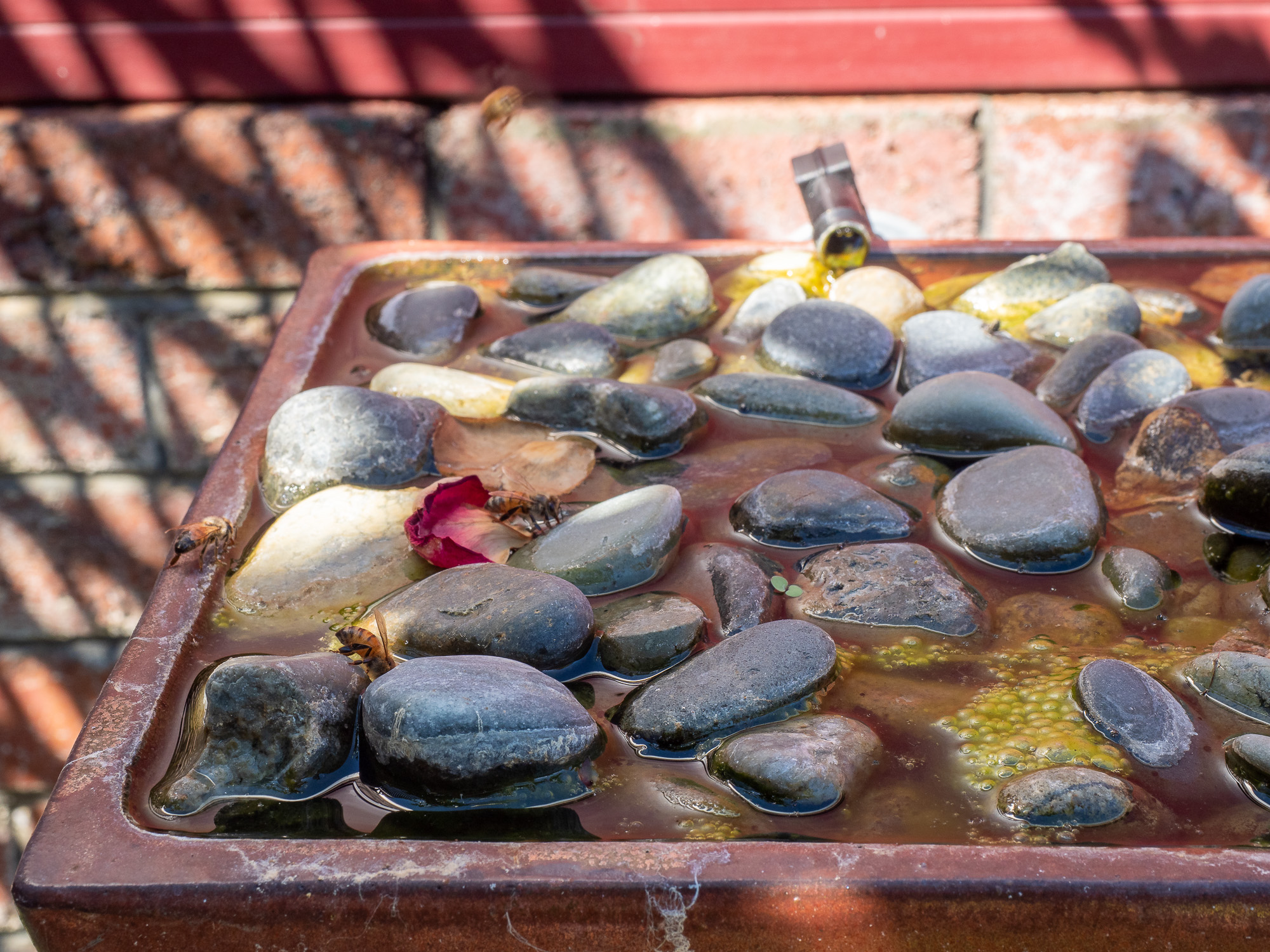
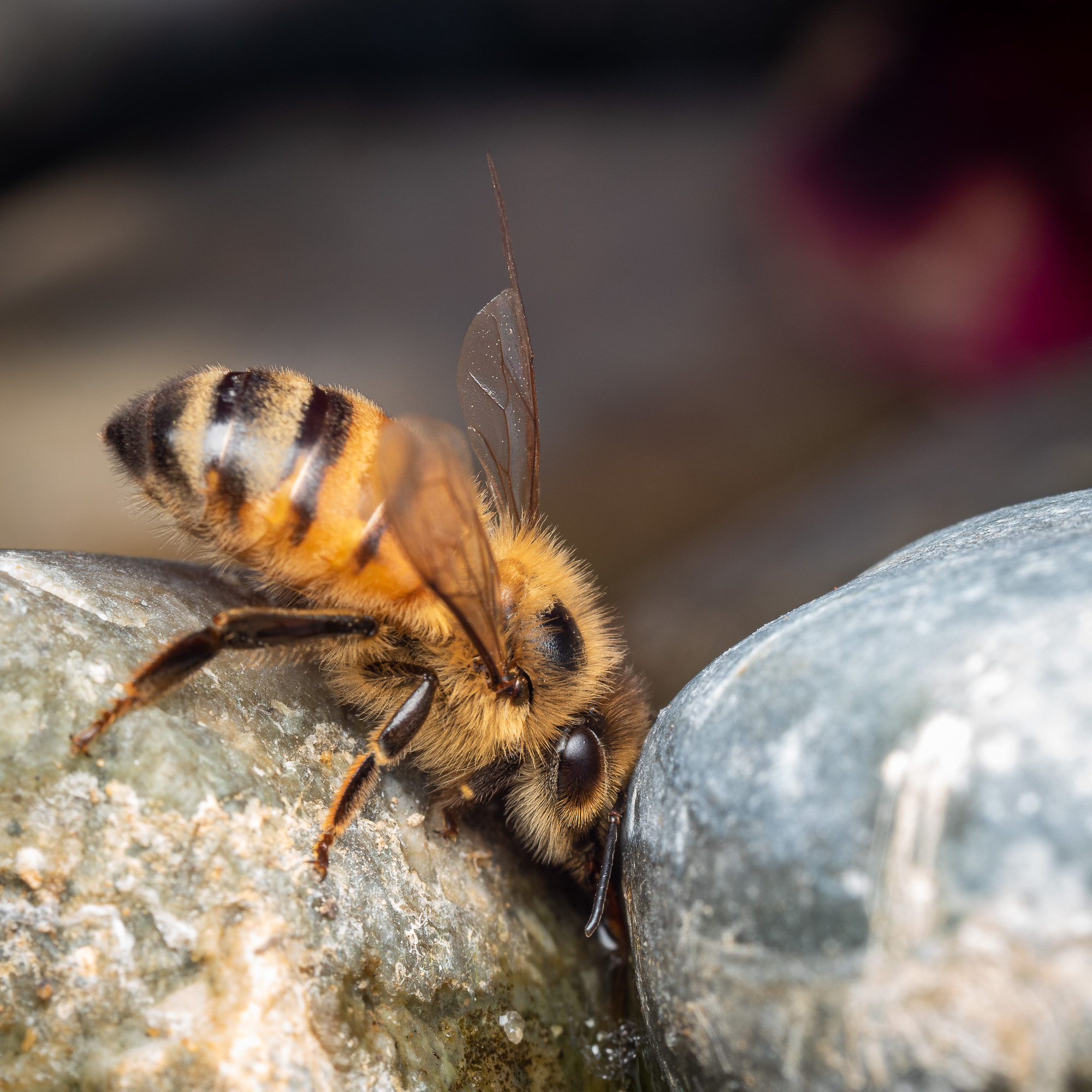
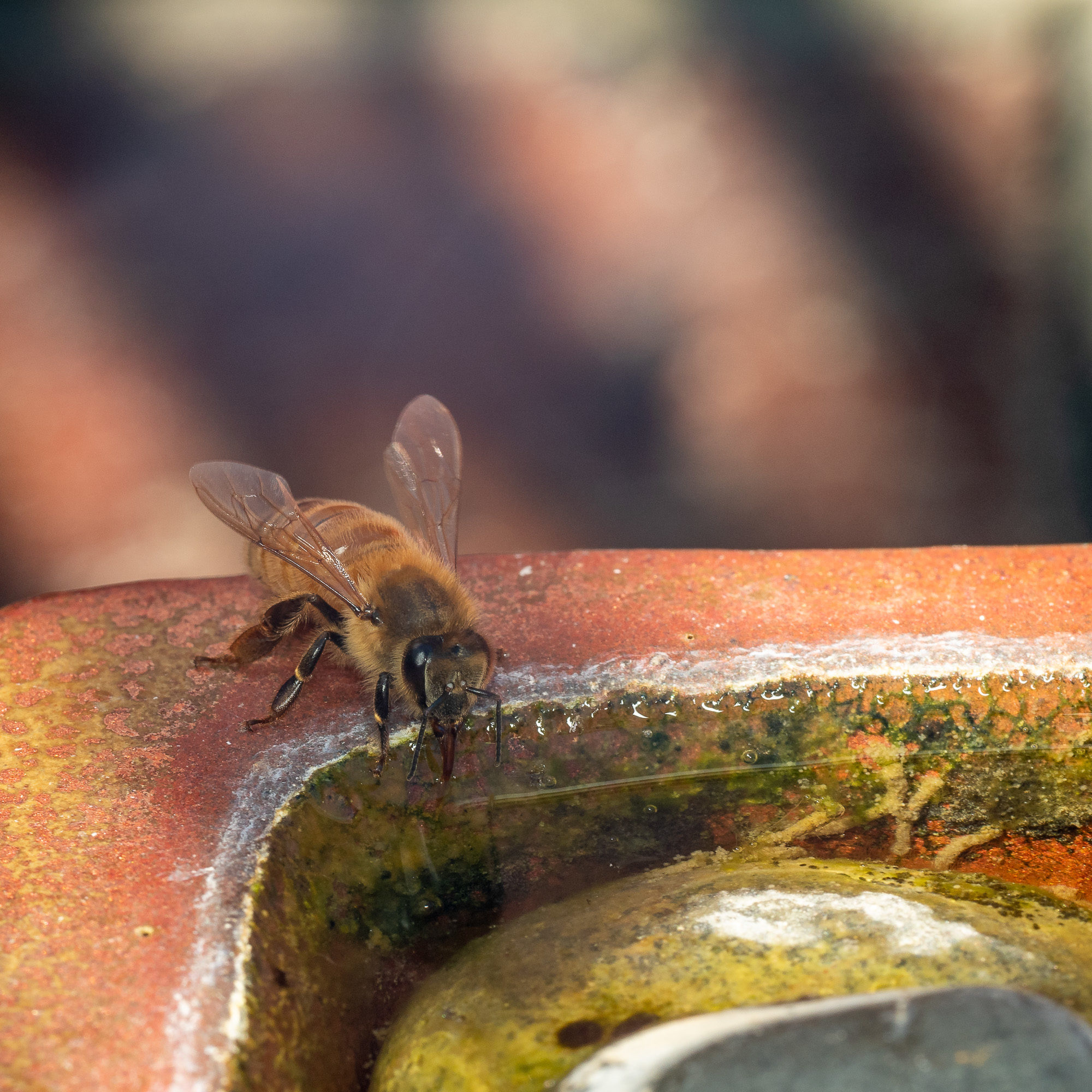
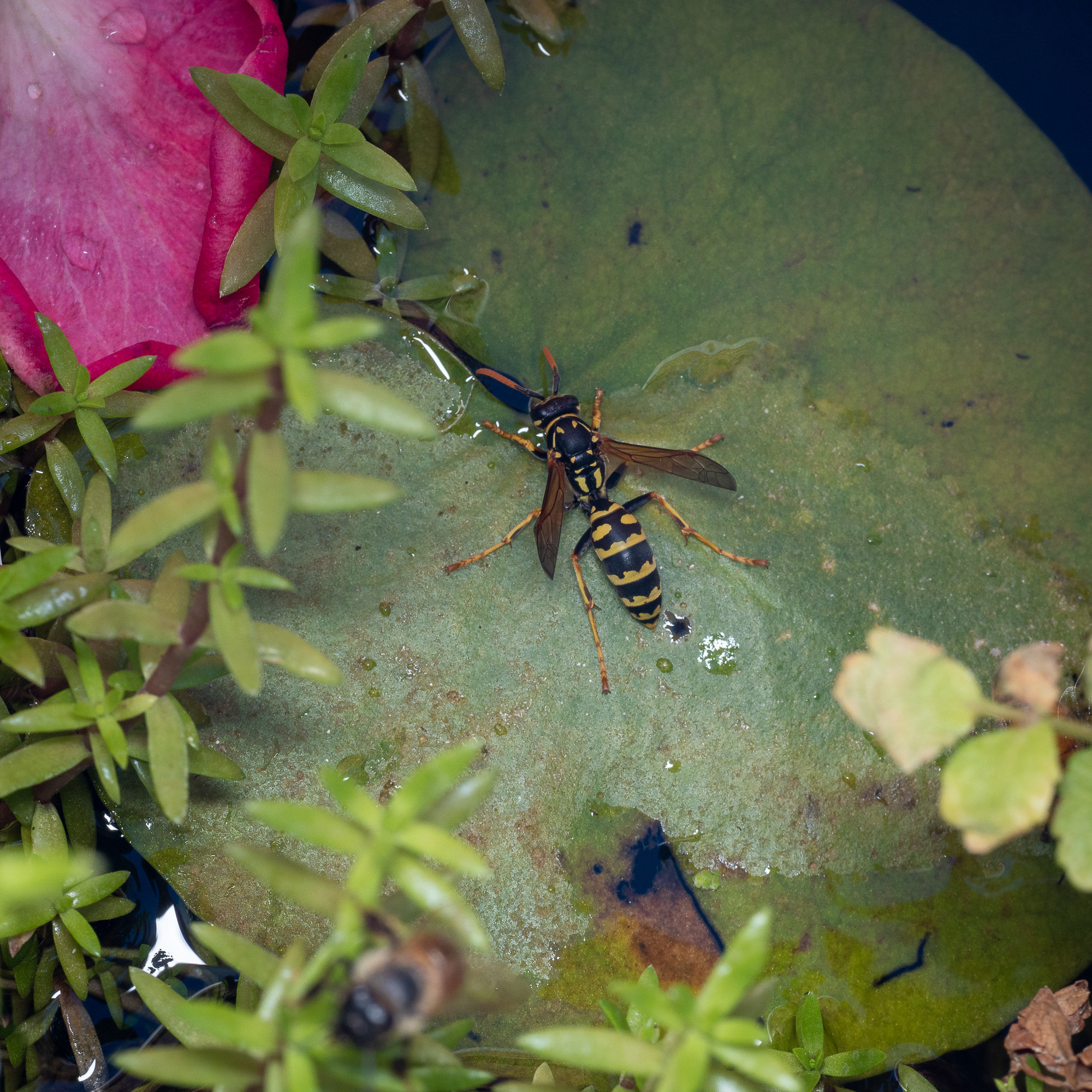
FUN FACT
Did you know that bees use water for a variety of purposes? They use it for:
- Cooling and humidity control – In the heat of summer it is used for evaporative cooling. Similar to human-designed air conditions, the bees spread a thin film of water atop sealed brood(baby bee cells) or on the rims of cells containing larvae and eggs. The workers inside the hive then fan vigorously, setting up air flow which evaporated the water and cools the interior of the hive.
- To un-crystalise stored honey – Bees need water to dilute stored honey that has crystallized (become too high in glucose) or in the case where beekeeper feeds them dried sugar crystals, they need water to dissolve the sugar. Without water, they can’t access these food sources.
- Feeding the bee farvae – Another type of bee in the hive is the nurse bee, who feeds the developing larvae. They consume large amounts of pollen, nectar, and water so that their hypopharyngeal glands can produce the jelly that is used to feed the larvae. A larvae diet can consist of water up to 80 percent the first day of larval growth and about 55 percent on the sixth day.
- And for drinking– They need it in the digestion and metabolization of their food, as do most organisms.
Fun fact sourced from: https://growtherainbow.com/blogs/news/35730115-why-honey-bees-need-water